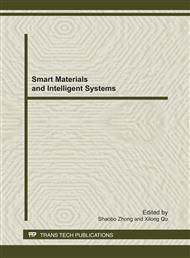p.446
p.453
p.458
p.463
p.468
p.472
p.477
p.482
p.488
Control System of Moving Target Simulator
Abstract:
To test the accuracy of image motion compensation of space camera, the moving target simulator was developed according to the principle of relative motion. As the core controller, PIC microcontroller controls DC motor to drive photoetching turntable rotating to simulate the relative linear velocity between ground target and aircraft, and the rotation motion is divided into uniform velocity rotation and sinusoidal velocity rotation. Furthermore, the simulation of drift angle of aircraft was realized by controlling stepper motor to drive the photoetching turntable deflecting, and the deflection includes uniform deflection, sinusoidal velocity deflection and specified angle positioning. The design of the hardware and software of control system has been completed and tested, and the experiment results show that the control system has high control precision and meets the design requirements.
Info:
Periodical:
Pages:
488-492
Citation:
Online since:
January 2012
Authors:
Keywords:
Price:
Сopyright:
© 2012 Trans Tech Publications Ltd. All Rights Reserved
Share:
Citation:


